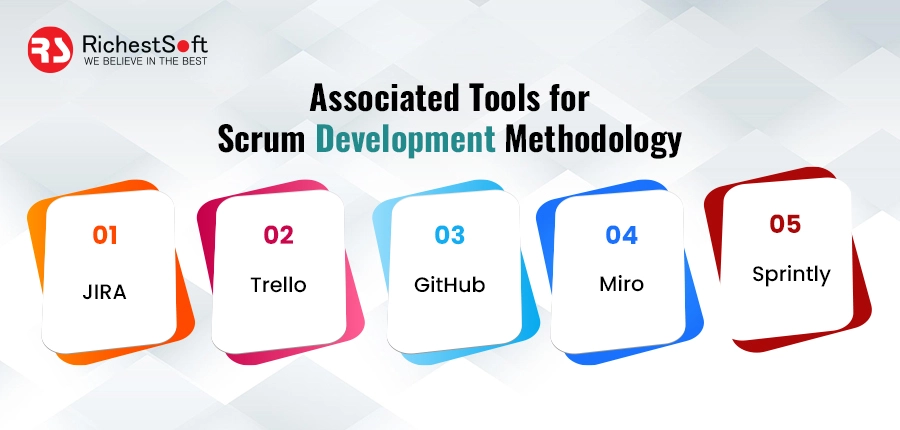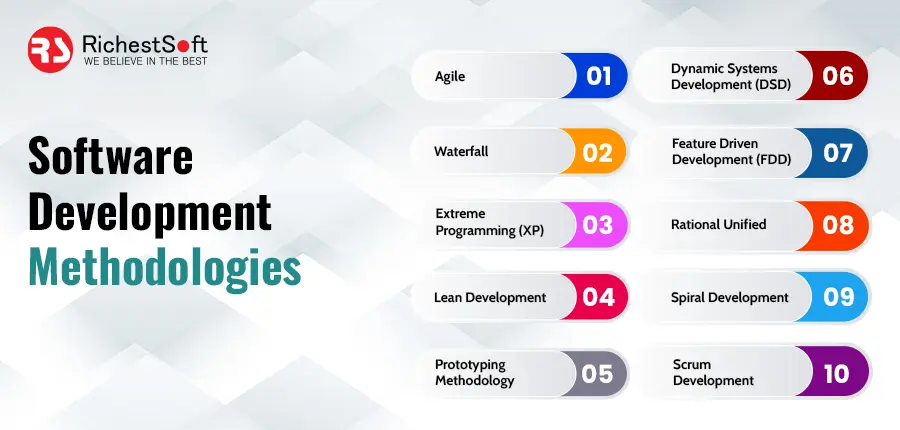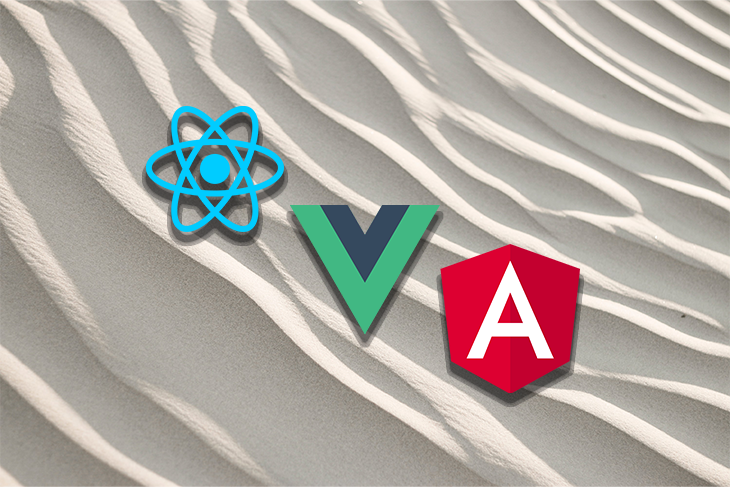As the technology is constantly growing, most businesses have started hunting down for software and tools that are feature-packed, efficient, and powerful to resolve the needs of customers and internal teams. In case you are also searching for the ideal solution to enhance your clients project, this post will be a great help. Various software development methodologies have emerged to fulfill the needs and goals of distinct projects. These strategies can be the best to make your development efficient, robust, and successful.
A study has stated that, by 2023, the money spent on IT software could be more than $755 billion. This fund is being used to build software, so engineers are starting to look for the most efficient and robust software development methodologies. You need an efficient software development methodology to reduce the time and money for your project execution. Moreover, due to the variety of approaches, it can be difficult to pick the most suitable one for the project.
Let us get started!
Software Development Methodologies
1- Agile Methodology
This method sets the focus on the project or product, leading to continuous modifications based on feedback from consumers and users, as well as changes made by engineers.
Agile software development is not limited by strict guidelines on one side, but it is broken down into brief intervals which provide quick and tangible results.
Pros
- Issues are identified and addressed in the early stages.
- Increased adaptability to the plan and simpler adjusting to various project adjustments.
- Reduced delivery times for projects.
- Improved communication with users, and their close involvement in each phase of the software development process.
- Outstanding quality of the final product.
- Primarily appropriate for smaller, younger companies that are more adaptable and open to active communication.
Cons
- Not having a clear understanding of the solution before attempting to implement it.
- The high dangers associated with overlooking project documentation and requirements.
- Unpredictability of budgeting, marketing strategies, sales, and more.
- The demand for quick responses to issues and feedback in real-time.
- It is easy to become overwhelmed by details and be diverted from the project goals.
Associated Tools: ActiveCollab, Atlassian Jira + Agile, Agilo for Scrum, Prefix, etc.
2- Waterfall Methodology
It is different from the one before, stringent and orderly. Each step must be finished before the next one can begin. In other words, each stage builds up to the subsequent one.
Moreover, it is not possible to revert to the previous step. It is simple to comprehend this technique since it assumes a precise order of accomplished tasks. The Waterfall software development procedure is usually seen as a conventional version of software development.
Pros
- The project plan is direct, with all objectives, needs, and significant elements characterized before the software development cycle.
- All the techniques are easy to comprehend.
- Strict discipline and more advantageous following of timetables.
- All phases of testing situations are arranged ahead of time.
- No monetary dangers because of the high arranging accuracy.
- The outcomes are easy to anticipate as they fulfill all the prerequisites and criteria sketched out in the project documentation, so the organizations get right what they anticipated to build up.
Cons
- Organizing the entire process can be a difficult task during the planning stage.
- Lack of adaptability and incapacity to incorporate modifications once the software development process has begun.
- Instigating the alterations to the project can result in extreme additional expenses.
- A prolonged period of completion.
- Not suitable for prolonged or continuous projects.
Associated Tools: Wrike, Smartsheet, ProjectManager, Mavenlink, Workfront etc.
3- Extreme Programming (XP) Methodology
One of the software development methods is well-suited for projects that are constantly changing, as it involves frequent communication with the customer and is highly adaptable.
It is an idea that extreme programming can increase the excellence of software due to its capacity to conform to shifting requirements. Moreover, regular feedback and communication are essential to an effective and contented team atmosphere.

Pros
- Customers having a crucial role in the process leads to superior products.
- Constant software testing makes sure the final product is reliable.
- Collaborative programming reduces mistakes during software development.
- Great flexibility and the capacity to apply modifications quickly.
- The code remains neat and easily understandable.
- No pressure to meet deadlines – developers can work at their speed.
Cons
- The success of the project heavily relies on the people involved.
- The outcome is uncertain and unpredictable.
- Customers should always be involved in the development of the software.
- It requires a considerable amount of time and capital.
- It is too difficult for small teams as they may not possess all the requisite skills and information.
Associated Tools: Junit, Maven, CoScreen, Jenkins, etc.
4- Lean Development Methodology
The lean software development methodologies are a software design technique that emphasizes minimizing losses. Consequently, the entire project is carefully studied beforehand to avoid unnecessary effort and expense. Since value is the focal point, feedback is prime to ensure quick action is taken.
Pros
- Ideal for a project with a small budget and tight deadlines
- The team is dedicated to completing tasks quickly
- It offers fast results by avoiding inessential and superfluous tasks
- It is easy to increase in size, unlike most other software development systems, making it ideal for large projects
- Removing unimportant tasks provides more time to focus on the core processes and add salient features to the final product
- Improved collaboration means the team can concentrate on meaningful and impactful work with increased motivation.
Cons
- The success of a team largely depends on its working capacity.
- Without adequate experience and knowledge, working alone might not yield desired outcomes.
- Reducing too much could cause a lack of direction for the project.
- There is a danger of delays due to limited resources or blockages.
- Excellent record-keeping is necessary to guarantee that all elements are created properly.
Associated Tools: Kanban, Kaizen, 5S, Value Stream Mapping, and Focus PDCA.
5- Prototyping Methodology
The waterfall approach is for customer feedback, so the first step is to set out the requirements. Developers then provide examples, and the customer evaluates them before the final development can begin.
The central idea of this software development approach is summarized in its name – prototype methodology. To avoid any troubles, there is extensive research and prototyping conducted before any genuine work is done.
Pros
The prototype can serve as a convenient tool for improving the user interface and user experience.
- Enhancing the system’s performance by inspecting how the system is being made.
- Customers and end users are heavily involved during the development process.
- Easily and effectively find glitches and difficulties.
- It is possible to be flexible in the app development process, which allows extra features to be added or existing features to be revised.
- Save time and money due to the early discovery of considerable problems.
Cons
- Excessive input from the customer can slow down the progress.
- There is a potential for a budget increase due to the cost of management going beyond the allocated funds.
- The system can become more complex than initially anticipated.
- Instead of starting from the beginning, the developers can reuse existing prototypes that may not match the customer’s expectations.
- There is a risk of too much effort, time, and money being put into the development.

Associated Tools: Figma, InVision Studio, Adobe XD, Webflow, Axure RP, etc.
6- Dynamic Systems Development (DSD) Methodology
The two main priorities are staying within a set schedule and staying within the budget. The goal is to deliver the desired software promptly while staying within the cost parameters. Therefore, user input is significant. The dynamic systems model focuses on continual feedback to ensure that the product meets the requirements and provides maximum functionality.
Pros
- Projects are completed in a limited amount of time but can be expected to be delivered on schedule.
- Development procedures are of a reliable standard, and can be further improved by studying documentation, testing the software, and conducting regular reviews of the results.
- Excellent communication between developers and customers.
- Aiming to achieve the required functionality as quickly as possible.
- Creating sufficient design work in advance to gain a direct understanding of the product the customer needs.
- Strict management of each phase of the project development.
Cons
- It will take a lot of money to create.
- This method won’t be suitable for a small business.
- It doesn’t inspire the programmer’s imagination.
- Most of the projects prioritize conforming to the instructions and regulations and overlook more sophisticated possibilities.
- Experienced developers with both business and technical knowledge are needed.
Associated Tools: Timeboxing, MoSCoW, PowerBuilder, etc.
7- Feature Driven Development (FDD) Methodology
Features are examined to be a type of user input. The process of planning, creating, and constructing all involve features. This strategy includes recurring cycles to enhance performance and manage multiple complexities. Feature-driven development strives to coordinate the efforts of various teams within a large organization.
Pros
- Generally used for large, long-term, and continuous projects.
- Gives a thorough comprehension of the project’s range, main objectives, and setting.
- Divides the characteristic sets into smaller parts and proceeds successive releases, consequently decreasing the dangers of blunders and permitting the delivery of particular highlights in shorter time frames.
- Utilizes the pre-set guidelines to simplify the developing procedure.
- Allows any developer with the proper experience and skills to manage the tasks.
- Uses a user-focused approach where the result is dependent on the user’s opinion.
Cons
- Not suitable for small businesses and minor projects
- Needs several competent developers to supervise the process
- Hard to guarantee a precise timeline
- Does not give the customers any written records, only the communication between the developers while the project is being started?
- Is more concentrated on individual code ownership rather
- to a collaborative team approach?

Associated Tools: Jira, Lucidchart, Microsoft Excel, IntelliJ IDEA, SonarQube, etc.
8- Rational Unified Methodology
This method is based on four developmental stages, during which all six essential development components – business modeling, requirements, analysis and design, implementation, testing, and deployment – are implemented, as mentioned by study.com.
The primary objective of this software development approach is to create functional software of superior quality without exceeding the budget or schedule.
Pros
- Ensures dependable, precise, and rigorous documentation
- Minimizes potential risks by attending to the customers’ changing demands
- Takes less time to integrate when going through the software development life cycle
- Reusing components can decrease the timeframe of task fulfillment
- This growth approach can be learned via the web-based training and tutorials out there on the web
- Merges the efficient aspects of Waterfall by combining them into a more iterative approach that is more helpful to modifications.
Cons
- A highly skilled and experienced developer is needed to ensure the project succeeds using this method.
- It is hard to understand the Rational Unified Process model.
- This model does not permit the utilization of pre-made components.
- It is inappropriate for large projects with multiple development systems, as it could cause more problems and confusion during the testing phase.
- The delivery process might take too long for certain types of projects.
Associated Tools: IBM Rational Method Composer, IBM Rational Team Concert, IBM Rational Software Architect, etc.
9- Spiral Development Methodology
The goal is to identify and address any potential issues at the beginning of the project. The process follows an ascending pattern, gradually increasing in complexity. This method combines traditional waterfall strategies with iterative approaches.
At each step, objectives must be established, and feedback from the customer must be obtained. The spiral model implies that potential risks must be addressed and eliminated before proceeding to the next stage.

Pros
- Suitable for mission-critical and long-term projects that need a professional risk assessment and stringent supervision.
- Estimating costs are equitably simple yet direct.
- Accomplishment of progress is fast.
- Repeated development minimizes the likelihood of risks and effectively manages system quality.
- Specific functions or modifications can be accomplished at earlier and later periods.
- Offers numerous opportunities for improvement from customer feedback.
Cons
- Not appropriate for smaller businesses and tasks
- The risk of not reaching the predetermined budget and timeline
- Necessitates a precise adherence to the spiral model project development process
- Requires specialized risk assessment proficiency
- Only knowledgeable developers can perform an accurate risk analysis.
Associated Tools: Slack, Zoom, Radar, JIRA, Trello, Adobe XD, etc.
10- Scrum Development Methodology
The workflow is split into sprints, which are easy to comprehend and effective in achieving the desired outcomes. The tasks for each sprint are decided ahead of time and then discussed after completion.
The Scrum software development methodology is adaptable, making it straightforwardly recognize and address emerging issues quickly. Therefore, it is capable of addressing projects with varying requirements with ease.
Pros
- Every step and procedure is clear and visible.
- Vigilant monitoring and control go hand-in-hand with regular updates to keep the team informed.
- It is simpler to eliminate mistakes and project issues.
- It encourages clients to be actively involved.
- This allows frequent updates on progress to be presented at regular meetings.
- Clients can follow the different project stages and measure progress.
Cons
- The amount of money and time that will be required can be unpredictable.
- There is no set timeline for product completion.
- Large projects cannot be managed with this strategy.
- Only experienced professionals who can consistently handle the tasks should be involved, no rookies.
- The testing team must carry out regression testing after each sprint, which is one of the most significant challenges of this approach.

Associated Tools: JIRA, Trello, GitHub, Miro, Sprintly, etc.
Why Should You Follow a Software Development Methodology?
Adhering to a structured software development methodology can significantly affect the quality of the end product, its user-friendliness, and the revenue generated after the software is begun. Furthermore, selecting the most superior software approach can influence the duration and cost of the specific project’s development.
After examining the comprehensive list of software development methodologies, you can now form an explicit understanding of which models would be most suitable for your project, resulting in a superior and feature-packed product after implementation.
No matter what kind of software methodology you decide on, you will always be able to have a good grasp of the project development and deliver the most efficient updates promptly.
Conclusion
There are a lot of software development methodologies. They have their features, advantages, functions, and potential drawbacks. So, it is always vital to choose one wisely.
Gaining knowledge of the characteristics of the software development methodologies accessible on the market can not only decrease the time, energy, and resources necessary for the completion of the project but also can drastically enhance the general procedure of software or application development.
Well, having complete information on the distinct software development methodologies can enable you to decide which strategy is applicable to your software development project needs.







Leave a Reply